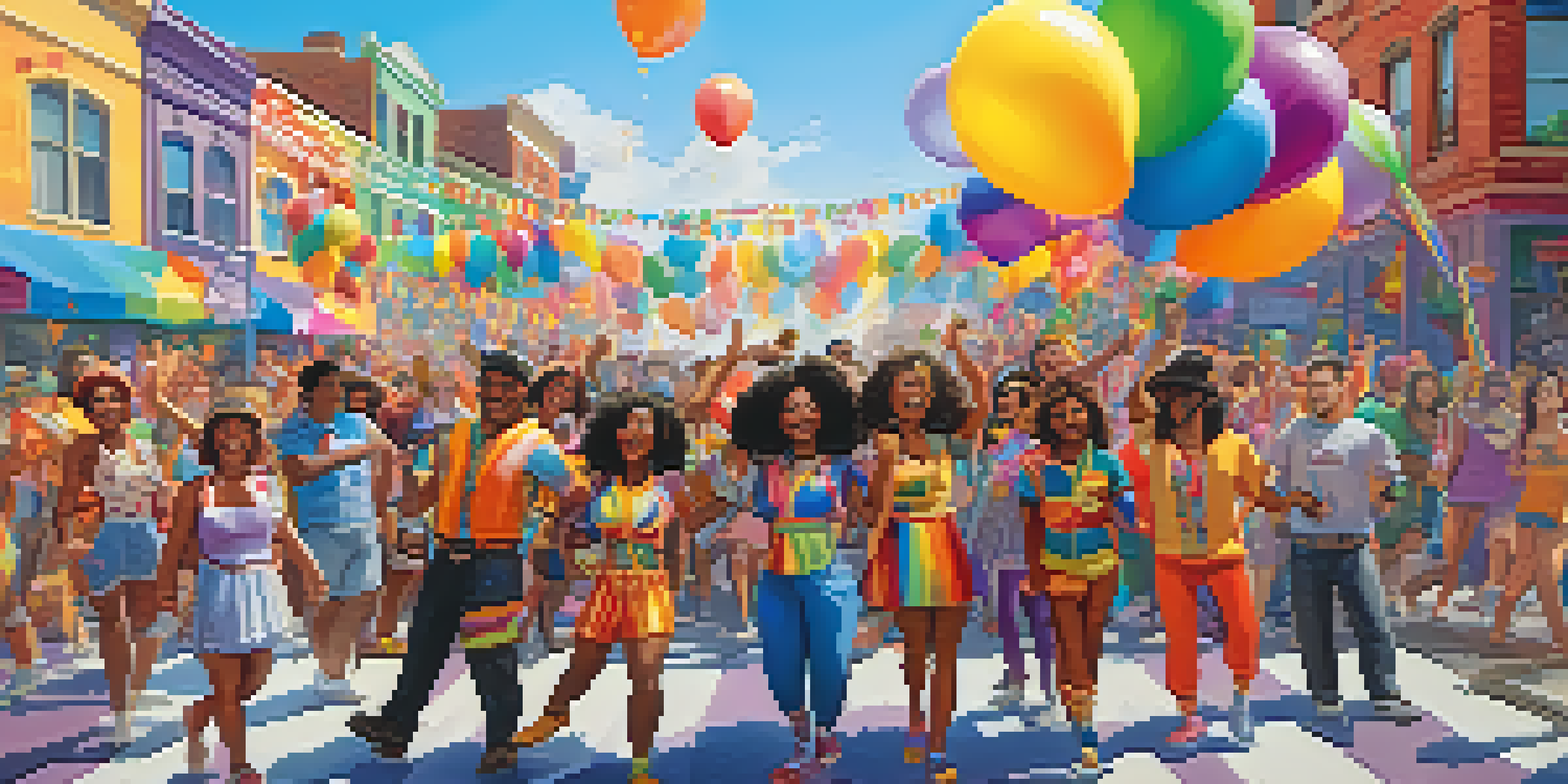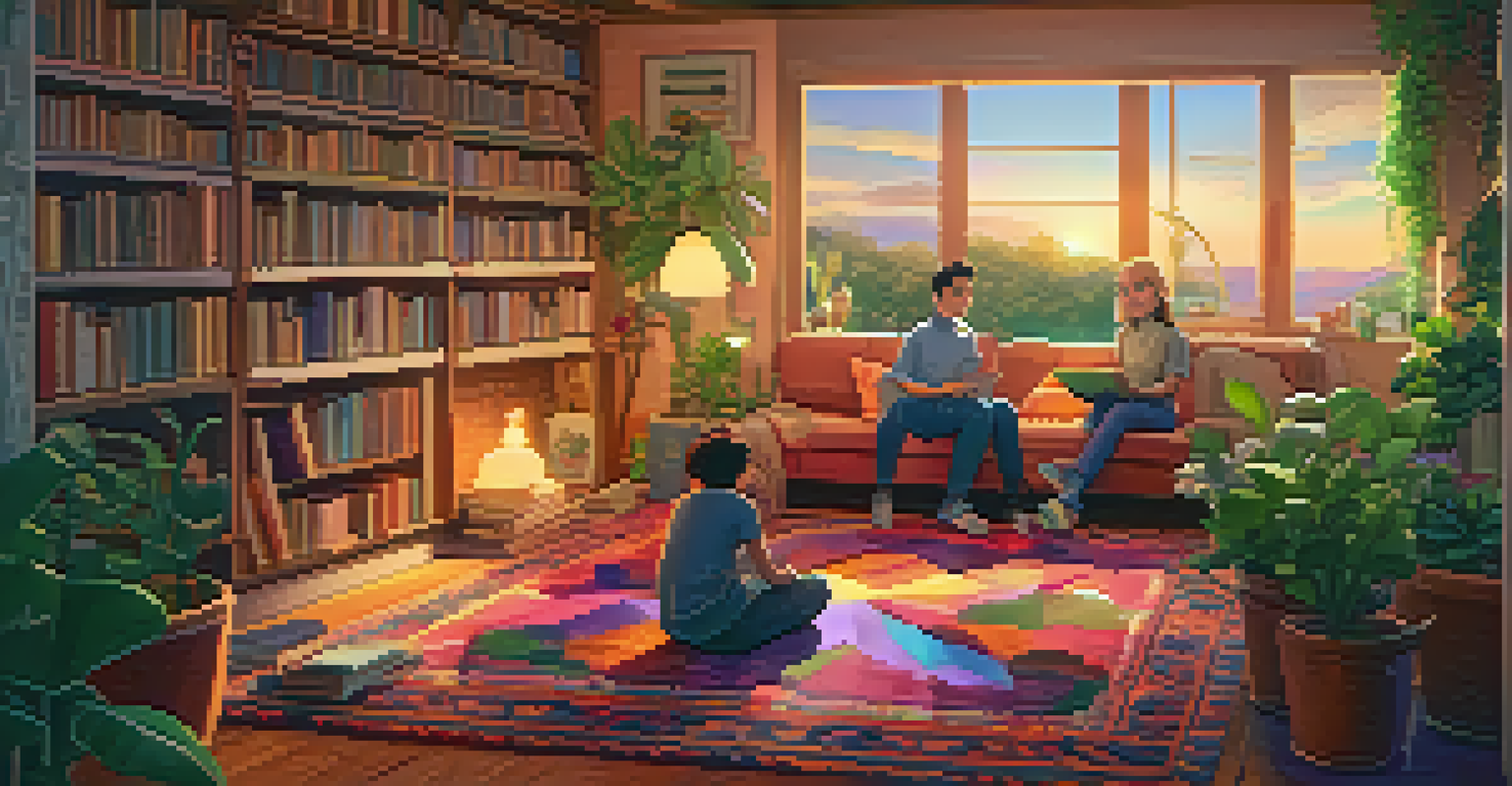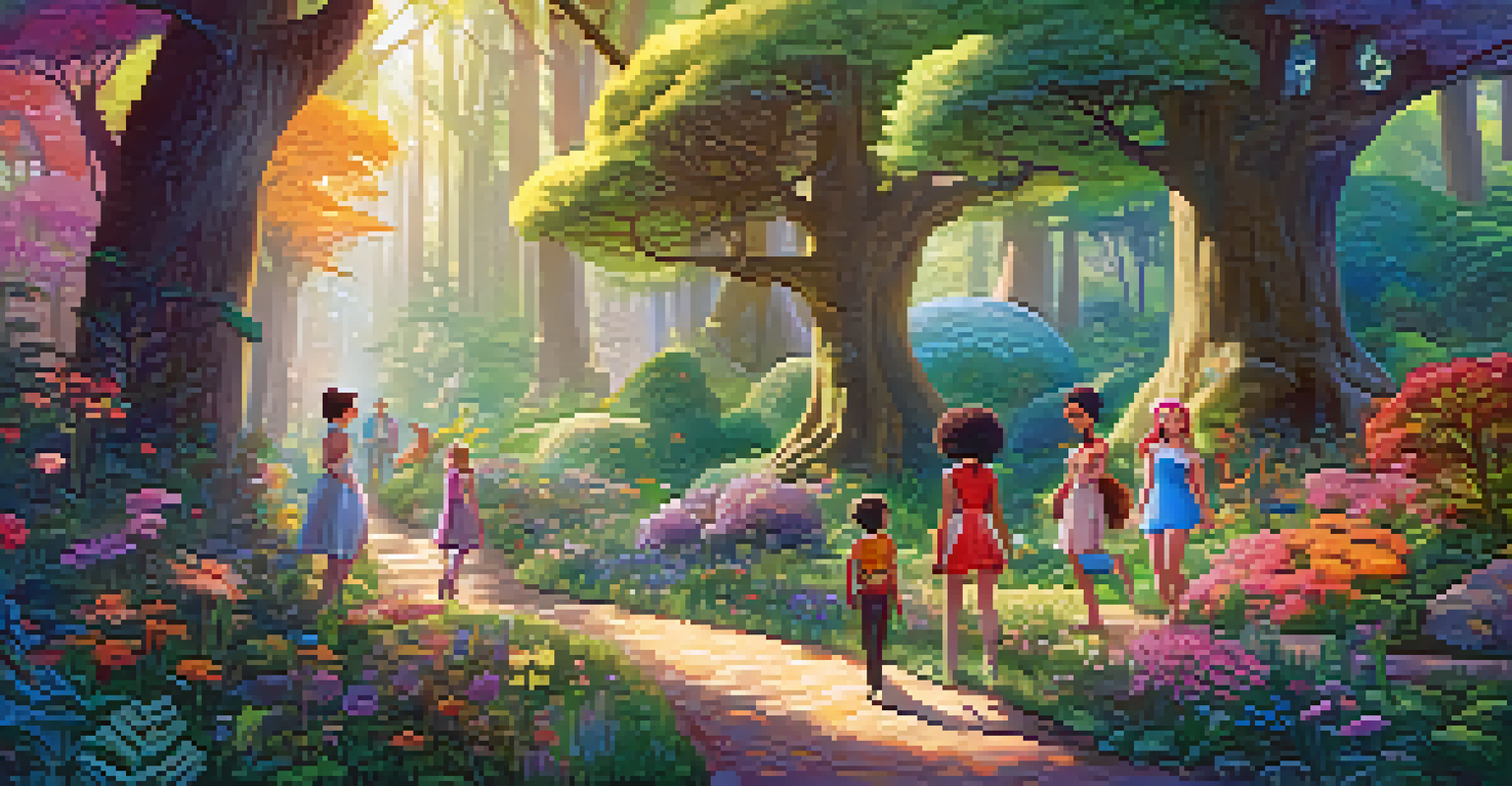Queer Representation in Animation: A Growing Trend in Media

The Evolution of Queer Characters in Animation
Over the past few decades, animation has seen a significant shift in how queer characters are portrayed. Initially relegated to stereotypes or background roles, LGBTQ+ characters are now taking center stage. This evolution reflects broader societal changes, as audiences demand more authentic and diverse representations.
Representation matters. We need to see ourselves in the stories we tell.
In earlier animations, queer characters were often coded rather than explicitly identified. For example, characters like Uncle Scrooge from 'DuckTales' were hinted to be queer through their flamboyant traits. Today, shows like 'Steven Universe' and 'Adventure Time' showcase fully fleshed-out LGBTQ+ characters with rich storylines.
This shift not only enriches storytelling but also provides representation for younger viewers who may see themselves in these characters. It sends a powerful message: love and identity come in many forms, and everyone deserves to see themselves represented in media.
The Impact of Queer Representation on Audiences
Queer representation in animation has a profound impact on audiences, particularly young viewers. Characters that reflect a diverse spectrum of identities can foster acceptance and understanding from an early age. When children see queer characters navigating their lives, they learn that love and identity are valid, no matter how they manifest.

Moreover, representation fosters a sense of belonging among LGBTQ+ youth. Shows like 'The Owl House' and 'Kipo and the Age of the Wonderbeasts' have been praised for their inclusive narratives, allowing viewers to connect with characters who experience similar struggles. This visibility can be incredibly empowering.
Evolving Queer Representation in Animation
Queer characters have transitioned from stereotypes to fully developed roles, reflecting societal demands for diverse storytelling.
As audiences become more aware of diverse identities, the demand for authentic storytelling continues to grow. This evolution not only benefits queer audiences but enriches the narrative landscape for everyone, creating a more inclusive media environment.
Challenges in Queer Representation
Despite the progress, challenges remain in achieving authentic queer representation in animation. One major issue is the risk of tokenism, where LGBTQ+ characters are included without meaningful development. This can lead to characters feeling one-dimensional, reducing their impact and relatability.
Diversity is the engine of innovation. When you bring together different perspectives, you create something amazing.
Moreover, the pressure to cater to a broad audience can result in watered-down portrayals. Some creators may shy away from fully exploring queer narratives due to fear of backlash from conservative viewers. This hesitance can stifle the richness of queer storytelling, leaving audiences craving more authentic representation.
Another hurdle is the need for creators to balance commercial viability with artistic expression. While some networks are more open to diverse storytelling, others may prioritize profits over representation, limiting the scope of queer narratives in animation.
The Role of Streaming Platforms in Representation
Streaming platforms have revolutionized how animation is produced and consumed, playing a crucial role in enhancing queer representation. With the ability to reach global audiences, these platforms have become safe havens for creators to explore diverse stories without the constraints of traditional networks. Shows like 'Big Mouth' and 'She-Ra and the Princesses of Power' have thrived on streaming services, showcasing rich queer narratives.
Moreover, streaming platforms often allow for longer storytelling arcs, enabling deeper character development. This format gives creators the freedom to weave complex queer narratives that resonate with viewers. The success of these shows demonstrates that there is a robust audience eager for diverse representation.
Impact on Young Audiences
Authentic queer representation fosters acceptance and belonging among young viewers, empowering them to embrace their identities.
As these platforms continue to gain popularity, they also influence mainstream animation trends. The more successful queer-inclusive shows become, the more likely traditional networks will follow suit, further expanding the landscape of representation in animation.
Iconic Queer Characters in Animation
Some characters have become iconic symbols of queer representation in animation, paving the way for future stories. For instance, Steven Universe, the titular character of the show, embodies love and acceptance, showcasing a range of identities and relationships. His journey emphasizes the importance of understanding and embracing oneself, resonating with many viewers.
Another notable character is Marceline from 'Adventure Time,' whose bisexuality and complex relationships add depth to her narrative. Her character has inspired countless fans, illustrating that queer representation can be both authentic and engaging. These characters have become touchstones within the community, symbolizing hope and acceptance.
As new shows continue to emerge, the landscape of queer characters only grows richer. Each new character offers fresh perspectives on identity and love, contributing to a more nuanced portrayal of the LGBTQ+ experience in animation.
The Future of Queer Representation in Animation
Looking ahead, the future of queer representation in animation appears promising, with more creators embracing diverse narratives. As audiences continue to demand authenticity, we can expect to see an increase in shows that explore complex queer themes. Emerging creators are now more empowered than ever to tell their stories, reflecting a wider range of experiences.
Additionally, the rise of social media amplifies voices advocating for representation. Fans can engage directly with creators, sharing their desires for more inclusive content. This interaction not only inspires creators but also fosters community, encouraging everyone to champion diversity in media.
Challenges and Opportunities Ahead
While progress has been made, issues like tokenism and commercial pressures still challenge meaningful queer narratives in animation.
As the landscape evolves, we may see even more groundbreaking stories that challenge societal norms and celebrate love in all its forms. The future of queer representation in animation is not just about visibility—it's about enriching the narrative tapestry of our shared experiences.
Conclusion: The Importance of Continued Advocacy
In conclusion, the growing trend of queer representation in animation is a vital development in media. While progress has been made, ongoing advocacy is essential to ensure that these narratives remain authentic and nuanced. By supporting creators who prioritize diverse representation, audiences can help shape a more inclusive future.
The impact of seeing oneself reflected in media cannot be overstated. Queer representation in animation not only validates the experiences of LGBTQ+ individuals but also educates wider audiences, fostering empathy and understanding. As more stories are told, the potential for change increases.

Ultimately, the journey towards true representation is a collective effort. By championing diverse narratives, we can create a media landscape that is rich, vibrant, and reflective of the world we live in—one where everyone has a place.